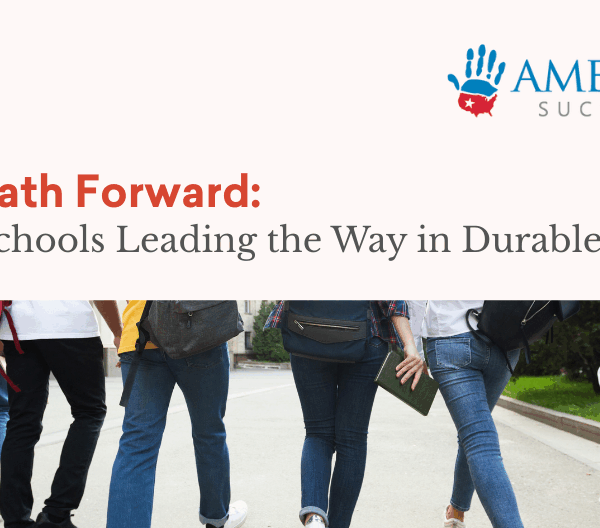Editor’s Note: This article was originally published in the Denver Business Journal and LinkedIn in the Fall of 2017, after the release of the America Succeeds report The Age of Agility: Education Pathways for the Future of Work. And the message remains just as relevant and urgent today.
_________
We are in the Age of Agility, an exciting, unsettling time in our nation’s history.
Going forward, workers and businesses alike will have to adapt continuously to rapidly changing circumstances, caused by the accelerating adoption of automation and artificial intelligence.
This has huge implications for Colorado, which has struggled over the years to produce enough skilled workers to fill available jobs, especially in the fields of science, technology, engineering, and math (STEM).
Now, on the heels of the Centennial State’s bid for a second Amazon headquarters and its 50,000 well-paying jobs, this challenge has become the focus of renewed attention. Amazon has said that it hopes to choose a city with high-quality and equitable STEM education opportunities.
Even without Amazon, by 2020 55 percent of Colorado jobs will require technology skills. But the state produces only about 500 computer science post-secondary graduates annually. Businesses are being forced, at significant expense, to seek qualified employees elsewhere.
This new age can offer great benefits to individuals and businesses, or it can displace hundreds of thousands, even millions of workers over the next couple of decades. PriceWaterhouseCoopers estimates 38 percent of U.S. jobs will be automated by 2030. To put that in context, sixth graders today will be entering their prime working lives then.
And despite popular misconceptions, it’s not just jobs on factory floors or in fast food restaurants that are at risk. Truck drivers, radiologists, even lawyers could find their jobs disappearing. White- and blue-collar careers alike are vulnerable, though lower-paying jobs are likely to vanish first and in greater numbers.
On the more positive side of the ledger, the Institute for the Future forecasts that 85 percent of the jobs that exist in 2030 have not yet been invented.
So, how do we address upheaval of such astounding proportions? And how do we prepare Colorado’s children today for such an unpredictable future? It must begin with our education system.
If Colorado students are to thrive in the Age of Agility, then schools must help them become life entrepreneurs. This will require radically shifting education from today’s top-down, command-and-control model to one characterized by inspired, bottom-up innovation – and this shift must be ubiquitous across all Colorado schools.
Fortunately, an increasing number of schools in Colorado are moving in this direction. In Salida, for example, a building trades apprenticeship program enables students to work directly with local businesses to build affordable housing for local teachers. Students gain marketable, real-world skills while local industry builds a sustainable talent pipeline.
And STEM Launch K-8 school in Thornton is opening a Family MakerSpace, a multi-generational effort to bridge home and classroom STEM learning for the school’s predominantly low-income population.
The goal of education in the Age of Agility should be to help students develop competencies that will prepare them for success in a world we cannot predict. One of these competencies is personal; students must learn to be adaptable, flexible and to take ownership of their learning.
They must also be entrepreneurial, able to demonstrate deep critical thinking, combined with creative problem solving and continued curiosity.
And with increasingly collaborative work environments, students must develop civic competencies – interpersonal and social skills that lead to personal and professional success.
All of this begs the questions: What should education look like in the Age of Agility? In some ways, it may bear little resemblance to what we think of today as “school.”
It must begin with robust early education for all children.
Learning must be personalized and technology-enabled, so that all students work and learn at their own pace, moving to the next lesson when they achieve mastery rather than fulfilling seat-time requirements.
And learning must be experiential, occurring outside school walls as much as within. Educators and business leaders will need to work together to create relevant and engaging work-based learning opportunities, from apprenticeships to job shadowing.
These are not small changes, and it will not be easy to disrupt a system that has largely remained unchanged for 100 years. But we cannot take the path of least resistance and allow complacency to stand in the way of the changes our educational system needs and our children deserve. The stakes are too high, and time is short.
Scott Laband is the president of Colorado Succeeds, a nonprofit, nonpartisan coalition of business leaders committed to improving the state’s education system.




